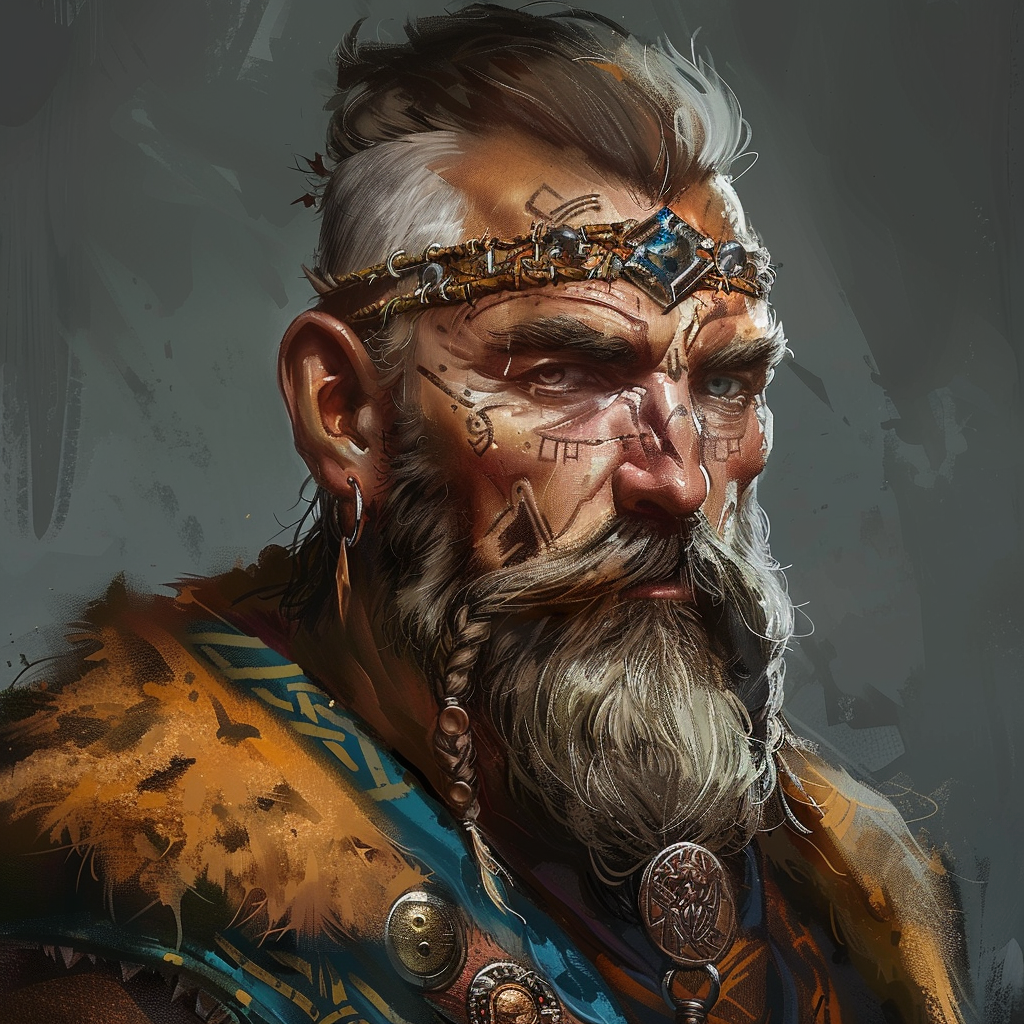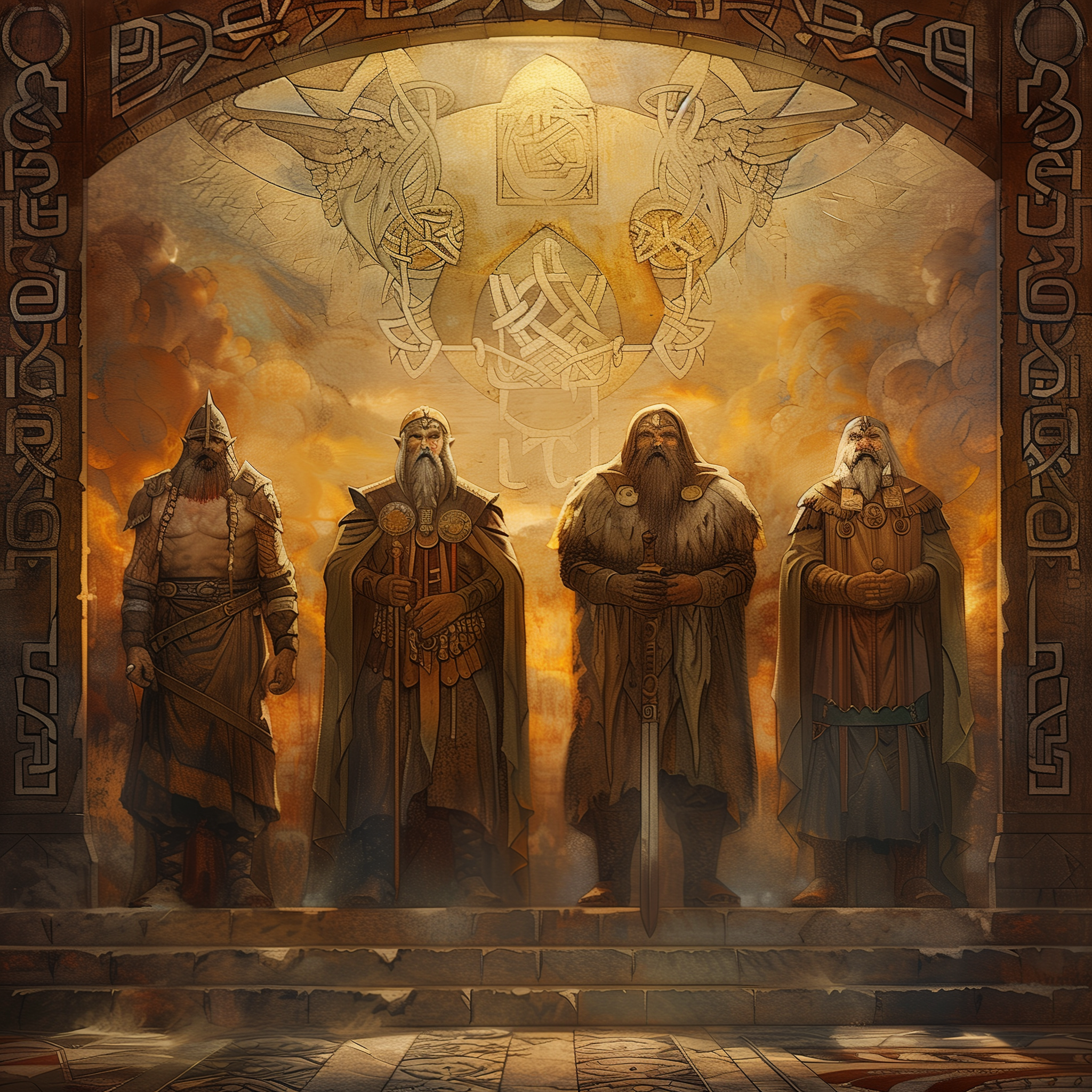Gravenholm - Stonesingers
Common: Stonesingers
In the southern reaches of Glainia, nestled amidst the rugged beauty of the Stethurst Highlands, lived a unique dwarven people known as the Gravenholm, or Stone Singers. Their name echoed their deep connection to the very earth they inhabited, a bond that manifested in their intricate stonework, their resonant music, and their unwavering devotion to their ancestors.
For generations, the Gravenholm had carved their homes and strongholds into the mountainside, their skill with stone unrivaled across the continent. Their cities were marvels of engineering, seamlessly blending into the natural landscape, while their intricate rune-covered monuments stood as testaments to their rich history and cultural traditions.
Culture
Major language groups and dialects
The primary language of the Gravenholm was Dwarvish, but they had developed a distinct dialect characterized by its unique pronunciation and vocabulary. This dialect, often referred to as "Stone Tongue," was rich in metaphors and idioms related to stone, earth, and the natural world.
Culture and cultural heritage
Gravenholm culture was steeped in tradition and a deep reverence for the past. Their ancestors were honored through elaborate rituals, storytelling, and the preservation of family runes. Music and song played a vital role in their cultural expression, with the unique "stone singing" tradition allowing them to interact with the very earth itself.
Shared customary codes and values
The Gravenholm held steadfast to a code of honor that prized loyalty, craftsmanship, and reverence for their ancestors. They valued hard work, resilience, and a deep connection to the earth. Family and clan ties were paramount, and individuals were expected to uphold the honor and traditions of their lineage.
Common Etiquette rules
Gravenholm etiquette emphasized respect for elders, deference to authority, and a strong sense of hospitality. Guests were welcomed warmly, offered food and drink, and treated with utmost courtesy. Formal greetings often involved the exchange of clan names and the recitation of ancestral lineage.
Common Dress code
Gravenholm attire was practical and durable, reflecting their rugged lifestyle and connection to the earth. Men and women alike wore sturdy boots, thick woolen cloaks, and leather jerkins or aprons. Clan symbols were often embroidered onto clothing or etched into jewelry, signifying family allegiance.
Art & Architecture
Gravenholm artistry was deeply rooted in their reverence for stone. Their architecture was characterized by massive, angular structures built from locally quarried stone. Intricate carvings adorned the walls of their homes and temples, depicting scenes from their history, mythology, and family sagas.
Foods & Cuisine
Gravenholm cuisine was hearty and satisfying, featuring roasted meats, root vegetables, and thick stews. They brewed their own beer, a strong and flavorful beverage often infused with mountain herbs. Communal meals were a central part of their social life, with families and friends gathering to share food and stories.
Common Customs, traditions and rituals
The Gravenholm observed a variety of customs and traditions throughout the year, many of which centered around the cycles of nature and the changing seasons. They held festivals to celebrate harvests, solstices, and equinoxes, often marked by feasting, singing, and the telling of ancient tales.
One of the most distinctive customs of the Gravenholm was the practice of adorning their faces with clan runes. These intricate markings, unique to each family, were more than mere decoration. They were a symbol of heritage, a connection to ancestors, and a source of pride. The runes were often incorporated into the Gravenholm's "stone singing" tradition, where specific melodies and chants were believed to resonate with the runes and enhance the power of their magic.
Birth & Baptismal Rites
The birth of a child was a joyous occasion celebrated with a naming ceremony, during which the newborn was presented with their clan runes and given a name chosen by their parents.
Coming of Age Rites
Upon reaching adulthood, young Gravenholm underwent a rite of passage that involved a solo journey into the mountains, where they sought to commune with the spirits of the earth and prove their worthiness to their ancestors.
Funerary and Memorial customs
The Gravenholm honored their dead with elaborate funeral rites, burying their loved ones in stone tombs adorned with intricate carvings and inscriptions. Memorial ceremonies were held regularly to remember and celebrate the lives of departed ancestors.
Common Taboos
Disrespecting elders, desecrating ancestral tombs, and betraying one's clan were considered grave offenses among the Gravenholm. They also held a deep aversion to necromancy and the manipulation of life and death, viewing it as a perversion of the natural order.
Encompassed species
Remove these ads. Join the Worldbuilders Guild












Comments